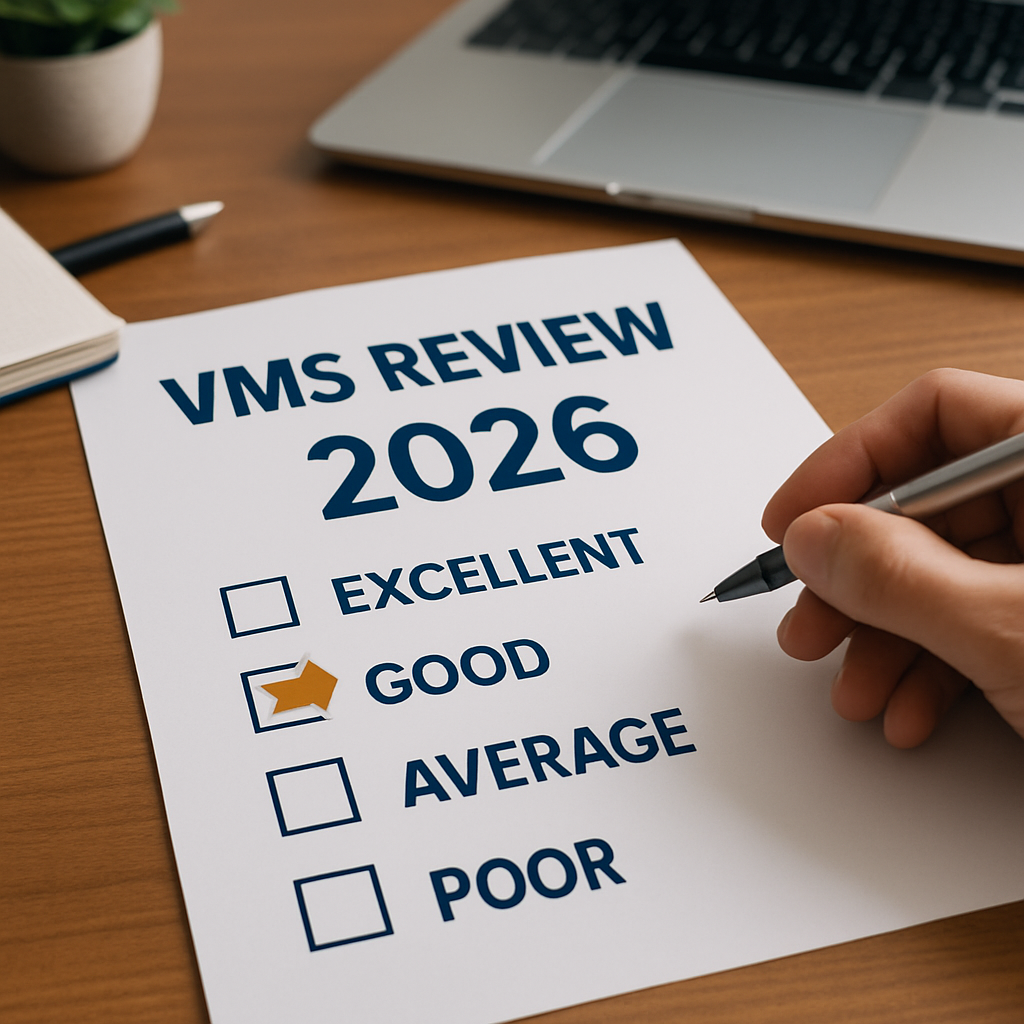Vendor Management System (VMS) Technology has advanced rapidly in recent years and will continue into this coming year. But is your organization keeping up?
In this blog, we’ll look at the three most critical VMS trends that you need to be aware of in 2024 to make sure that your VMS provider is not leaving you behind.
Many Industry experts and analysts I speak with are surprised at the lack of innovation and improvement in the quality of VMS technology by their provider since the late 1990s. Many of the larger VMS providers are still operating on their original tech stacks with little to no update on their interface and useability.
Buyers of VMS systems, however, are sometimes hesitant about choosing new and emerging providers. despite the many advantages of a VMS. It is the old "No one ever got fired for hiring IBM" dilemma.
So why should someone choose one VMS over another? Primarily, it comes down to aligning business requirements to your needs; but you also need to consider how the old legacy systems will fare in the future. As VMS technology rapidly advances, some of these legacy systems cannot keep up. This will result in their customers being left behind in an ever-advancing world.
The three most critical items you need to be aware of in 2024 and beyond to ensure your VMS can perform today and in the future are:
1 - Advancements in the Tech Stack
When organizations are looking at choosing a VMS there are a lot of factors to consider. But one that is often overlooked, and is the most critical, is the tech stack being employed by the VMS provider.
Until a couple of years ago the software world hadn’t advanced that much for systems to improve that much. However, in the last few years, system development architecture and hosting have seen amazing advancements that anyone buying a VMS should be looking for.
The Codebase
Legacy VMS systems are built on dated Codebases with millions and millions of lines of code. Teams of developers are required to keep it working across hundreds of clients each with their own customized codebase. This is expensive to maintain, and those costs get passed on to their customers. Client implementations are lengthy and expensive. If anyone says .NET, run!
Today's new VMS systems are lightning fast and more reliable than ever. One reason for this is the codebase and how they are run.
Today's coding is enhanced through processors such as React or Node which allows code to run efficiently with much less lines of code than legacy systems require. Modern codebases are very cost effective to maintain and support. Customization and configuration are fast and easy. If open sourced, customers can do their own integrations and access data on their terms. This means high user satisfaction, adoption and ultimately better realization of the promised VMS benefits.
The User Interface
Anyone remember Lotus Notes? That system was around when the main legacy VMS providers started. Lotus Notes has long since been passed over by better systems.
Many of the older VMS’ have dated user interfaces which makes the user experience less appealing. Often the systems have been over engineered making it hard for users to figure out even the most basic task like posting a job. Even for those that have an updated UX, often the bones of the system are held together with bandaids which means poor performance, user frustration and expensive system fees.
Today’s modern interface should be clean, intuitive and pleasing to the eye. Use of cards vs tables of data is one way to define a more modern user interface. Colors should be contrasting to drive the users' eyes to the right places. UX design is now a science which helps make the system more intuitive and easier to use. A new UI on an old codebase and architecture is a step in the right direction however a modern UI design will still suffer from old code and foundational architecture.
The Systems Architecture
Think of it like an old house. If you paint the walls, it looks nicer, but that doesn’t help with the crumbling foundation or mold in the walls. Sadly, this is the reality of many VMS system providers. If you're looking to buy a house, unless you’re handy and want a make-work project, why would you buy a house that fails the inspection?
Since the legacy VMS’ are all so old now, trying to do anything like integrations or customizations is a lot of work, resource and is cash intensive. Many of them have invested heavily in partnering with a single integration partner such as an ERP or HRIS. Unless you're using the partner’s back-office system, where does this leave you? Not to mention the costs of data access and integration, which can be astronomical.
The modern VMS is built on the latest and most reliable and secure architecture. A micro services environment is the Ferrari of architecture. Hosting on cloud platforms like AWS is important as they offer instant security, global coverage, speed and scalability. You don’t want to choose a provider that has a dedicated or self-hosted server environment.
Today's new VMS Systems
With the advancement of codebases, architecture and hosting, today's new VMS systems are fast, secure, highly adaptable and easy to use. First-time buyers of VMS solutions are the first adopters of this latest innovation in VMS tech. Since they have no legacy systems to get out from under, they are in a better position to embrace these better next-gen solutions.
2 - Open Access or Open API
Modern VMS systems are built on an ‘Open API’. In the VMS world, all that means is that authorized customers and their development teams can access the codebase and their data without the software provider’s involvement.
Why is this important? An Open API eliminates expensive integration projects that take months to complete. Customers can create their own integrations and access their data how they want. Imagine, not having to call your VMS provider to integrate your ATS and VMS? Or building your own data feed into your Business Information platform so you can create your own reports.
Suppliers, who up until now have had little to no access to integrations or data, can now create their own integrations and pull their data for reporting and consolidations.
3 - Adaptable Functionality
Finally, another critical advancement in VMS technology for 2024 is easily adaptable functionality. Configuration or customization of legacy VMS systems is expensive, resource intensive and can take over 12 months to complete. Newer modern systems with the latest codebase and architecture can be modified quickly and at very minimal cost.
Why should a customer have to wait months for minor modifications to a form, an ATS integration, or a custom report? Bottom line is they shouldn’t.
There will be many new developments in the VMS space in the coming years. If you are looking at a VMS for the first time or are looking to switch VMS providers, we would encourage you to lift up the hood on each one to make sure you aren’t going to need a new engine or transmission down the road. This will be expensive and significantly curb the value your organization will gain from technology.
The Conexis Difference
At Conexis VMS, we’ve built a sophisticated VMS software solution that’s easy to use. We’ve removed the complex functionalities and features of the traditional VMS providers and only included the components that you truly need. That means we’re able to stand up our out of the box VMS system for your organization in as little as a few weeks.
Interested in learning more about Vendor Management Solutions?
Whether you are looking for a new VMS Solution, or just getting started, we are here to help. See how easy Conexis is to use by taking a quick 2 minute Self-Guided Tour. Contact Us for a Free No-Obligation Consultation to discuss your workforce challenges (and get immediate actionable insights) or Book a Personal Demo Today!




